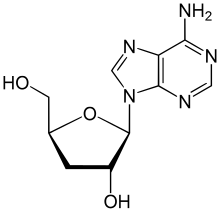Cordyceps
Cordyceps | |
|---|---|
 | |
Cordyceps militaris | |
Scientific classification | |
| Kingdom: | Fungi |
| Division: | Ascomycota |
| Class: | Sordariomycetes |
| Order: | Hypocreales |
| Family: | Cordycipitaceae |
| Genus: | Cordyceps Fr. (1818) |
Type species | |
Cordyceps militaris (L.) Fr. (1818) | |
| Species | |
about 400 | |
Cordyceps /ˈkɔːrdɪsɛps/ is a genus of ascomycete fungi (sac fungi) that includes about 400 species. Most Cordyceps species are endoparasitoids, parasitic mainly on insects and other arthropods (they are thus entomopathogenic fungi); a few are parasitic on other fungi. The generic name Cordyceps is derived from the Greek word κορδύλη kordýlē, meaning "club", and the Latin word caput, meaning "head".
The genus has a worldwide distribution and most of the approximately 400 species[1] have been described from Asia (notably Nepal, China, Japan, Bhutan, Korea, Vietnam, and Thailand). Cordyceps species are particularly abundant and diverse in humid temperate and tropical forests.
Contents
1 Species
2 Biology
3 Research
4 In popular culture
5 Gallery
6 References
7 Further reading
8 See also
9 External links
Species
C. sinensis was shown in 2007 by nuclear DNA sampling to be unrelated to most of the rest of the members of the genus; as a result it was renamed Ophiocordyceps sinensis and placed in a new family, the Ophiocordycipitaceae, as was "Cordyceps unilateralis".[2] Other species previously included in the genus Cordyceps have now been placed in the genus Tolypocladium.[citation needed]
Cordyceps and Metacordyceps spp. are now thought to be the teleomorphs of a number of anamorphic, entomopathogenic fungus "genera" such as: Beauveria (Cordyceps bassiana), Lecanicillium, Metarhizium and Nomuraea.[citation needed]
Biology
When a Cordyceps fungus attacks a host, the mycelium invades and eventually replaces the host tissue, while the elongated fruit body (ascocarp) may be cylindrical, branched, or of complex shape. The ascocarp bears many small, flask-shaped perithecia containing asci. These, in turn, contain thread-like ascospores, which usually break into fragments and are presumably infective.[citation needed]
Research

Cordycepin
Polysaccharide components and cordycepin are under basic research and have been isolated from C. militaris.[3][4]
In popular culture
The Last of Us, a 2013 video game developed by Naughty Dog, portrays a fictional Cordyceps fungus that has mutated to infect human hosts, with apocalyptic results.[5]
Gallery

Cordyceps beginning its growth from a wasp

Cordyceps militaris

Cordyceps militaris
Cordyceps ophioglossoides
References
^ Sung, Gi-Ho; Nigel L. Hywel-Jones; Jae-Mo Sung; J. Jennifer Luangsa-ard; Bhushan Shrestha & Joseph W. Spatafora (2007). "Phylogenetic classification of Cordyceps and the clavicipitaceous fungi". Stud Mycol. 57 (1): 5–59. doi:10.3114/sim.2007.57.01. PMC 2104736. PMID 18490993..mw-parser-output cite.citation{font-style:inherit}.mw-parser-output q{quotes:"""""""'""'"}.mw-parser-output code.cs1-code{color:inherit;background:inherit;border:inherit;padding:inherit}.mw-parser-output .cs1-lock-free a{background:url("//upload.wikimedia.org/wikipedia/commons/thumb/6/65/Lock-green.svg/9px-Lock-green.svg.png")no-repeat;background-position:right .1em center}.mw-parser-output .cs1-lock-limited a,.mw-parser-output .cs1-lock-registration a{background:url("//upload.wikimedia.org/wikipedia/commons/thumb/d/d6/Lock-gray-alt-2.svg/9px-Lock-gray-alt-2.svg.png")no-repeat;background-position:right .1em center}.mw-parser-output .cs1-lock-subscription a{background:url("//upload.wikimedia.org/wikipedia/commons/thumb/a/aa/Lock-red-alt-2.svg/9px-Lock-red-alt-2.svg.png")no-repeat;background-position:right .1em center}.mw-parser-output .cs1-subscription,.mw-parser-output .cs1-registration{color:#555}.mw-parser-output .cs1-subscription span,.mw-parser-output .cs1-registration span{border-bottom:1px dotted;cursor:help}.mw-parser-output .cs1-hidden-error{display:none;font-size:100%}.mw-parser-output .cs1-visible-error{font-size:100%}.mw-parser-output .cs1-subscription,.mw-parser-output .cs1-registration,.mw-parser-output .cs1-format{font-size:95%}.mw-parser-output .cs1-kern-left,.mw-parser-output .cs1-kern-wl-left{padding-left:0.2em}.mw-parser-output .cs1-kern-right,.mw-parser-output .cs1-kern-wl-right{padding-right:0.2em}
^ Holliday, John; Cleaver, Matt (2008). "Medicinal Value of the Caterpillar Fungi Species of the Genus Cordyceps (Fr.) Link (Ascomycetes). A Review" (PDF). International Journal of Medicinal Mushrooms. New York: Begell House. 10 (3): 219–234. doi:10.1615/IntJMedMushr.v10.i3.30. ISSN 1521-9437.
^ Khan, MA; Tania, M; Zhang, D; Chen, H (May 2010). "Cordyceps Mushroom: A Potent Anticancer Nutraceutical" (PDF). The Open Nutraceuticals Journal. 3: 179–183. doi:10.2174/1876396001003010179. Archived from the original (PDF) on 18 March 2012.
^ Nakamura, K; Shinozuka, K; Yoshikawa, N (2015). "Anticancer and antimetastatic effects of cordycepin, an active component of Cordyceps sinensis". Journal of Pharmacological Sciences. 127 (1): 53–6. doi:10.1016/j.jphs.2014.09.001. PMID 25704018.
^ Grounded: The Making of The Last of Us. 2014-02-28. Event occurs at 13m28s.
Further reading
Bensky, D.; Gamble, A.; Clavey, S.; Stoger, E.; Lai Bensky, L. (2004). Chinese Herbal Medicine: Materia Medica (3rd ed.). Seattle: Eastland Press. ISBN 0-939616-42-4.
Kobayasi, Y. (1941). "The genus Cordyceps and its allies". Science Reports of the Tokyo Bunrika Daigaku, Sect. B. 5: 53–260. ISSN 0371-3547.
Mains, E. B. (1957). "Species of Cordyceps parasitic on Elaphomyces". Bulletin of the Torrey Botanical Club. 84 (4): 243–251. doi:10.2307/2482671. ISSN 0040-9618. JSTOR 2482671.
Mains, E. B. (1958). "North American entomogenous species of Cordyceps". Mycologia. 50 (2): 169–222. doi:10.2307/3756193. ISSN 0027-5514. JSTOR 3756193.
Tzean, S. S.; Hsieh, L. S.; Wu, W. J. (1997). Atlas of entomopathogenic fungi from Taiwan. Taiwan: Council of Agriculture, Executive Yuan.
Paterson, R. R. M. (2008). "Cordyceps - a traditional Chinese medicine and another fungal therapeutic biofactory?". Phytochemistry. 69 (7): 1469–1495. doi:10.1016/j.phytochem.2008.01.027. PMID 18343466.
See also
The Last of Us
External links
| Wikimedia Commons has media related to Cordyceps. |
Wikispecies has information related to Cordyceps |
- Video on how Cordyceps Infects and Kills Ants



